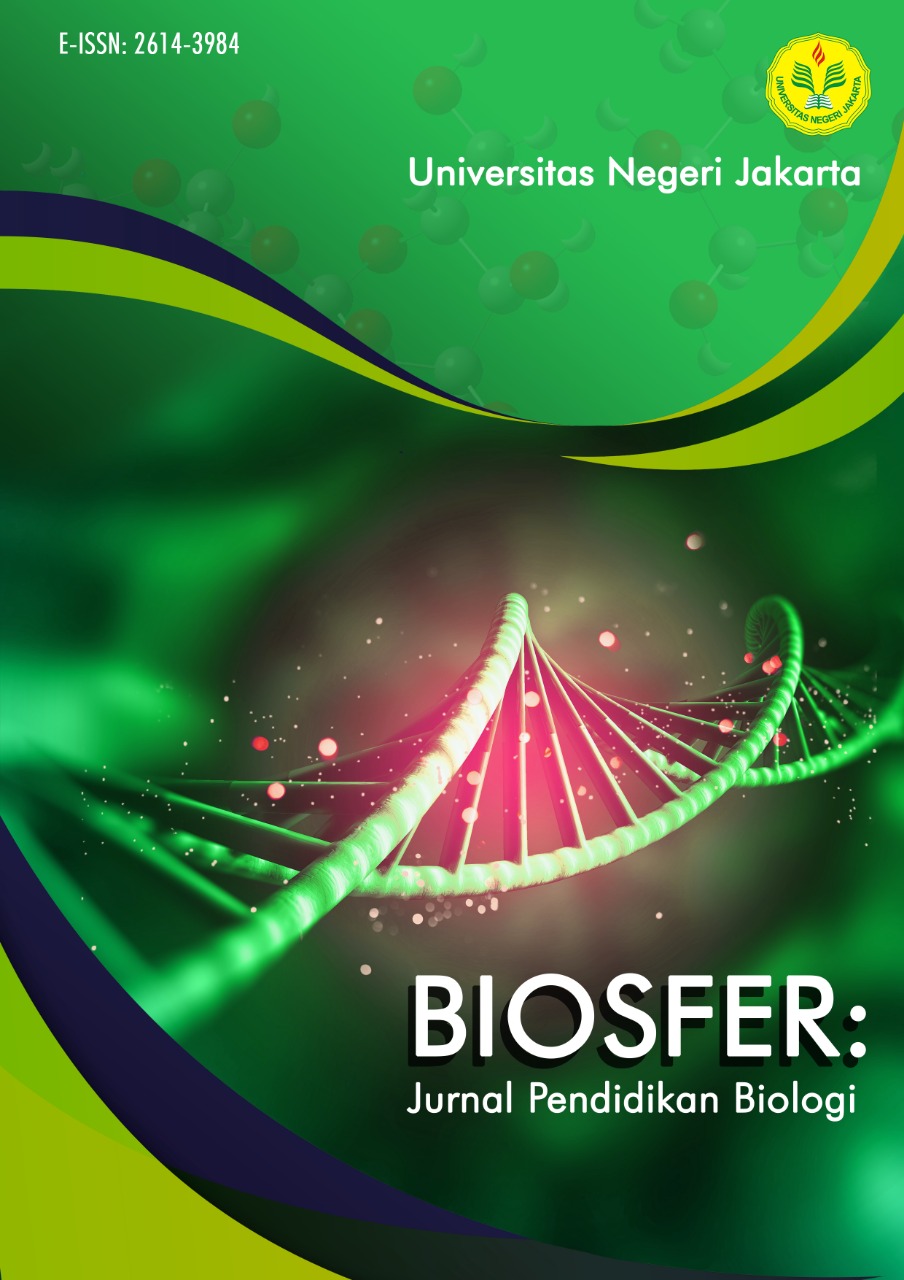The Effect of Two Stay Two Stray (TSTS) Technique of Cooperative Learning Model toward Students Biology Learning Outcomes
DOI:
https://doi.org/10.21009/biosferjpb.7-1.4Keywords:
Biology learning outcomes, ecosystem, two stay two stray technique of cooperative learning modelAbstract
Learning activities determines the achievement of learning aims and objectives. One of the objectives can be reflected in higher students learning result. The improvement may occur using Two Stay Two Stray Technique of Cooperative Learning Model since students are encouraged to learn together and help each other in groups. The research aimed to determine the effect of Two Stay Two Stray (TSTS) technique of Cooperative Learning Model on Students Biology Learning Outcomes on the ecosystem topic. This research was carried out at SMAN 2 Tangerang on May to June 2012 using a quasi-experimental method. Two science classes at grade 10 were selected by purposive sampling technique, class X-7 as the experimental group and class X-8 as the control group. An overall of 36 students of each class was selected by simple random sampling. Data obtained by using instruments of multiple choice question test and affective Attitude Scale. The result of Normality testing of Kolmogorov-Smirnov test and homogeneity testing of F-test showed a normal distribution and homogenous data. The average Biology study result of experimental group was 79.1 while of control group was 74.3. Based on the result, it can be concluded that Two Stay Two Stray (TSTS) technique of Cooperative Learning Model affected Students Biology Learning Outcomes.
Downloads
Published
How to Cite
Issue
Section
License
The Authors submitting a manuscript do so on the understanding that if accepted for publication, copyright of the article shall be assigned to Biosfer: Jurnal Pendidikan Biologi (Biosferjpb) and Departement of Biology Education, Universitas Negeri Jakarta as publisher of the journal.



